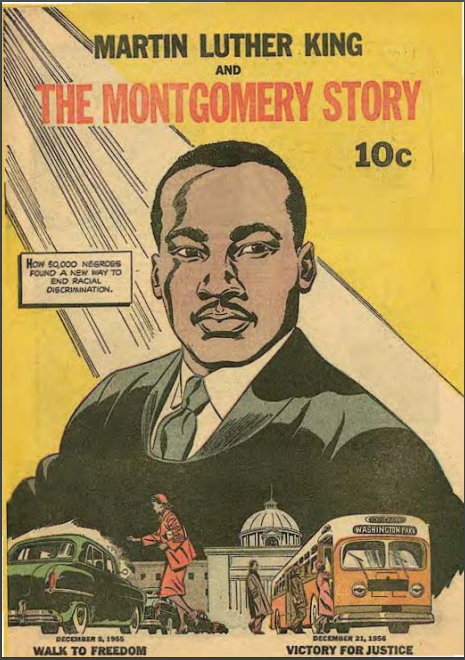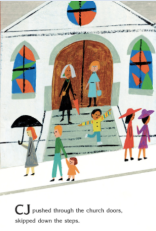In a previous post, I questioned a question:
“How did [the character] change? What caused this change?”
This question is part of an assessment in Teacher College Reading Units of Study in Grade 3. But many of the elementary texts that students can read independently at that grade level do not contain a character change at all. Why ask this question as an assessment if the ELA Common Core State Standards do not address character change until grade 6?
By definition, change denotes a making or becoming distinctly different and implies a radical transmutation of character. In literary terms, those characters that do change are called dynamic characters.
A dynamic character undergoes substantial internal changes as a result of one or more plot developments. The dynamic character’s change can be extreme or subtle, as long as his or her development is important to the book’s plot or themes.
Of course, the language in this literary definition of a dynamic character is too high for elementary students K-3. There are also few characters that students encounter in reading grade level texts with “substantial” internal changes, subtle or otherwise.
But what many elementary texts, especially picture books, do show are characters that learn. The novelist Anthony Burgess (A Clockwork Orange) has commented on creating characters that “increase in wisdom”:
“There is, in fact, not much point in writing a novel unless you can show the possibility of moral transformation, or an increase in wisdom, operating in your chief character or characters.”
Readers of his novel A Clockwork Orange would credit Burgess as a master in crafting a character (Alex) who undergoes a moral transformation. But his suggestion that a character can have “an increase in wisdom” is a good explanation of what younger students should look for in the elementary texts they can read.
For example, there is an increase in wisdom seen in Alexander in Alexander and the Terrible, Horrible, No Good, Very Bad Day who concludes that there are just bad days…even in Australia. Many picture books serve as examples where the chief character experiences an increase in wisdom:
- CJ in Last Stop on Market Street learns to appreciate what is beautiful;
- Jabari in Jabari Jumps learns how to be brave and take a risk;
- Gus in Sam and the Firefly learns self-control;
- Stellaluna, the African bat learns how to be part of different families;
- The child (Patricia Pollacco) learns to be brave in a storm in Thundercake;
- Chrysanthemum learns to take pride in her name.
In some stories, this increase in wisdom is made obvious by a shift in a character’s feelings or opinion. This may seem to be a matter of semantics, whether a change in feelings or opinion is the same as an increase in wisdom. For example, the character “Sam-I- am” character reverses his deeply held opinion after (finally) tasting Green Eggs and Ham. But is he wiser? One could argue that his change in opinion about a food choice is just a change in opinion, not an internal change in his character. (Of course, the same could be said for Jane Austen’s Elizabeth Bennett in Pride and Prejudice. Her character does not change, but her opinion of Mr. Darcy is far more favorable after she visits Pemberley!)
A direct question about what lesson was learned will also prevent students from confusing a physical change in a character with a character change. For example, when Camilla’s love of lima beans in A Bad Case of Stripes is revealed as the cause of her colorful outward appearance, she (eventually) gains the wisdom to care less about what others think. In another physical change, the donkey Sylvester’s transformation into a rock in Sylvester and the Magic Pebble could be read as a commentary on fate or chance because, as a rock or not, he remains Sylvester who loves his family. Students should understand that the physical changes that some characters undergo are not character changes.
There are some examples at the elementary level where the moral transformation is inferred, simplified, without “substantial internal” deliberations. The Three Robbers by Tomi Ungerer, convert from being dangerous highwaymen to generous stepfathers when the little girl Tiffany asks what will they do with their ill-gotten gains. On one page, they are bad, and on the next page, they are good. The radical change in their thinking is inferred, and the evidence of their moral transformation is in their actions, adopting unwanted children.
As students move from picture books, chapter books, and series books, they will encounter other examples of moral transformation of a character with the kind of evidence that shows “substantial internal” deliberation that Burgess referenced. Jerry Spinelli’s Crash and Louise Fitzhugh’s Harriet the Spy each feature a protagonist who undergoes a moral change in character.
But it also should also be noted that in the literary canon, not every novel features characters who undergo moral transformative change. Which characters really experience this kind of change in To Kill a Mockingbird? Or Catcher in the Rye?
Ultimately, asking students “How did [the character] change? What caused this change?” in the elementary grades without laying the literary groundwork can muddy their understanding when they tackle more complex texts. Asking students a question about an increase in wisdom or “what the character learns” instead can be a better way to begin to build their understanding of what character change is, or isn’t, in the texts they can read independently not only in Grades K-3 but in Grade 4 and Grade 5 as well. Students should be encouraged to look for a shift in a character’s feelings or opinion as evidence for an increase in wisdom. They can learn to make inferences about a character’s increase in wisdom, such as what Duncan learns about creativity in The Day the Crayons Quit.
Then, by Grade 6, they will be prepared to respond to an assessment question that is based on the CCSS standard “…describe how a particular story’s or drama’s plot unfolds in a series of episodes as well as how the characters respond or change as the plot moves toward a resolution. (RL.6.3)”
There is, however, a bonus to discussing the shifts in a character’s feelings with K-3 elementary texts that is not always available in the upper grades. Students in elementary grades can use the illustrations in a text as evidence to support information on the differences a character may feel. And what better evidence is there for showing all the different shifts in a character’s feelings than through the expressive illustrations of Mo Willems’ Pigeon?
Is there evidence for a change in the Pigeon’s feelings? Certainly. But, an increase in Pigeon’s wisdom? Well, maybe.

























